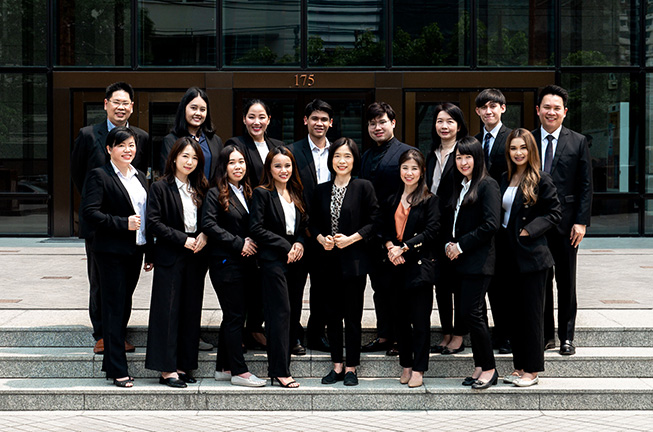Patentable Inventions in Thailand Under Article 9 of the Thai Patent Act B.E. 2522: A Comparative Analysis with Global Patent Regulations

Patentable Inventions in Thailand Under Article 9 of the Thai Patent Act B.E. 2522: A Comparative Analysis with Global Patent Regulations
Patents are a fundamental component of Intellectual Property (IP) law, providing inventors with exclusive rights to their innovations. However, the criteria for what constitutes a patentable invention vary across jurisdictions, as they are influenced by diverse legal traditions, economic priorities, and policy objectives. The legal framework that governs patents in Thailand is the Patent Act B.E. 2522, amended by the Patent Act (No.2) B.E 2535 and the Patent Act (No.3) B.E. 2542. The Act has been subject to numerous revisions over the years to ensure that it is consistent with international standards, including those established by the World Trade Organization (WTO) and the Trade-Related Aspects of Intellectual Property Rights (TRIPS) Agreement.
Article 9 is a critical provision of the Act and is instrumental in establishing the scope and constraints of what is considered a patentable invention in Thailand. Computer-based and biological inventions have been the two most contentious domains. This article explores the concept of patentable inventions in Thailand under Article 9 and compares these criteria with patent regulations in other major jurisdictions, including the United States, the European Union, and Japan. The focus will be on computer-based and biological inventions.
Understanding Article 9 of the Thai Patent Act B.E. 2522
The patent eligibility boundaries are outlined in Article 9 of the Patent Act B.E. 2522, which specifies what is not deemed an invention under the act. The Article sets out the patenting of specific subject matters, thereby guaranteeing that only genuine innovations that satisfy specific criteria may be granted patent protection.
Key Exclusions under Article 9
Several categories of subject matter that are not considered patentable inventions are identified in Article 9. These consist of:
1. Naturally occurring microorganisms and their components, animals, plants or extracts from animals or plants: This implies that the components of organisms that commonly occur in nature are not patentable. Nevertheless, this Article does not encompass the use of genetically modified microorganisms (GMM) in the production of desired products, such as the use of genetically modified pichia pastoris to enhance the production of ester (DIP application no. 1703001861). It is also excluding the use of extracts from animals or plants, such as the use of Kaffir lime, mint, and wild spikenard leaves to prevent rice weevil (DIP application no. 1101000398).
2. Scientific or mathematical rules or theories: The Act explicitly prohibits the patenting of scientific hypotheses or discoveries that are merely preliminary. For instance, Thai patent law does not recognize the discovery of a new mathematical formula or a natural law as an invention.
3. Computer programs: Article 9 explicitly prohibits the patenting of computer programs per se, although this exemption is subject to interpretation and may differ depending on whether the software has a technical effect or is a component of a larger patentable system or process.
4. Methods of diagnosis, treatment or cure of human and animal diseases: Medical methods are generally not patentable under Thai law. This exclusion is intended to guarantee that medical professionals can employ the most effective techniques for patient treatment without being subjected to patent-related limitations.
5. Inventions contrary to public order, morality, health, or welfare: Patents are not granted for inventions that encourage unlawful activities, unethical practices, or that might harm societal values. This may encompass methods or devices that are deemed socially unacceptable or unethical in Thai society, promote violence, or facilitate crime.
Comparative Analysis with Global Patent Regulations
The exclusions listed in Article 9 of Thailand’s Patent Act have parallels in other jurisdictions, though the specific criteria for patentability can differ significantly.
Scope of Patentable Subject Matter:United States (Article 101 of Title 35 of the United States Code)
The United States has a more expansive definition of what constitutes a patentable invention. Under Article 101, virtually any new and useful process, machine, manufacture, or composition of matter can be patented, provided it meets the novelty, utility, and non-obviousness criteria. There are fewer categorical exclusions, with courts typically handling the nuances of what is or is not patentable.
European Union (Article 52-53 of the European Patent Convention)
The European Patent Convention (EPC) has a similar approach, excluding certain categories like scientific theories, mathematical methods, aesthetic creations, and business methods as stipulated in article 52(2) EPC. Nevertheless, the EPC offers some flexibility in terms of exclusions, particularly regarding computer programs and biotechnological inventions, if they exhibit a technical effect or contribute to a technical field.
Japan (Article 29 and 32 of the Japanese Patent Act)
Japan’s Patent Act also excludes certain categories, like scientific discoveries and aesthetic creations. However, Japan’s legal system is more accommodating in its approach to biotechnological inventions and computer programs, allowing patents to be granted if they address a technical issue or make a technical contribution.
Biotechnological Inventions:United States
The United States allows for the patenting of biotechnological inventions, including genetically modified organisms, engineered biological materials, and biotechnological processes. Naturally occurring organisms cannot be patented unless they have been modified or otherwise manipulated in a way that creates something new.
European Union
As stipulated in Article 53, the EPC is more permissive, allowing patents on microbiological processes and the products thereof, but excludes plant and animal varieties and essentially biological processes for their production.
Japan
Japan allows the patenting of biotechnological inventions, including genetically modified organisms and related biotechnological processes, provided they meet the criteria of novelty, inventive step, and industrial applicability.
Medical Methods:United States
The United States permits the patenting of medical methods, such as diagnostic and treatment methods, with certain exceptions, particularly for medical personnel who employ patented methods in their practice under “safe harbor” provision. The United States system is more lenient in permitting patents for these innovations.
European Union
Similar to Thailand, methods of treatment by surgery or therapy, as well as diagnostic methods performed on the human or animal body, are excluded by the EPC. Nevertheless, pharmaceuticals or medical devices that are employed in these procedures may be eligible for patent protection.
Japan
Methods for surgery, therapy, or diagnosis are also not patentable in Japan. Still, Japan permits patents for pharmaceutical products or medical devices that are employed in these procedures, similar to the EPC.
Article 9 of Thailand’s Patent Act B.E. 2522 is essential in establishing the limits of patentable subject matter in the nation. The Act guarantees that patents are issued exclusively for innovations that provide practical advantages and advance technology by prohibiting specific categories. Thailand’s patentability criteria are generally consistent with those in other main jurisdictions when compared to global standards, although there are some differences in the treatment of software and medical methods.
It is imperative for businesses and inventors that operate in multiple jurisdictions to comprehend these distinctions. It is crucial to customize patent strategies to the legal frameworks of each target market, as the fundamental principles of patent law are broadly similar worldwide. However, specific exclusions and requirements may differ. As ILCT is a leading law firm with a highly recognized and rewarded Intellectual Property Department, we recommend that any questions or concerns you have regarding this matter be sent to us at ipgroup@ilct.co.th.
Patentable Inventions in Thailand Under Article 9 of the Thai Patent Act B.E. 2522: A Comparative Analysis with Global Patent Regulations Download
